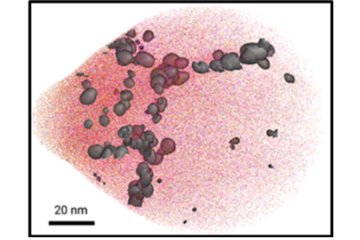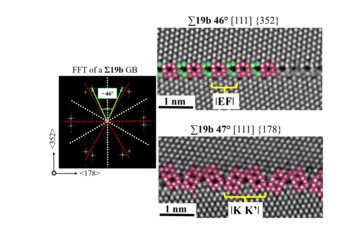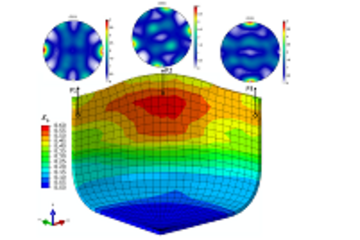All genres
2481.
Thesis - Diploma
Deformation of Semi-Brittle Intermetallic Material under Superimposed Hydrostatic Pressure. Diploma, Ecole Centrale de Nantes, Nantes, France (2002)
2482.
Thesis - Master
An optimized method to determine initial parameters of advanced yield surfaces for sheet metal form-ing applications. Master, Ruhr-Universität Bochum (2021)
2483.
Thesis - Master
Hydrogen Associated Decohesion and Localized Plasticity in a Dual-phase Lightweight Steel. Master, RWTH Aachen University (2020)
2484.
Thesis - Master
Using Machine Learning and Data-driven Approaches to Predict Damage Initiation in Dual-Phase Steels. Master, Ruhr-Universität Bochum (2020)
2485.
Thesis - Master
On the role of defects in Ir-Ru alloys for energy conversion applications. Master, RWTH Aachen University (2020)
2486.
Thesis - Master
Recrystallization behavior and mechanical properties of interstitially alloyed CoCrFeMnNi equiatomic high entropy alloy. Master, RWTH Aachen University (2020)
2487.
Thesis - Master
Investigation of the low cyclic fatigue behavior of high manganese steels. Master, RWTH Aachen University (2019)
2488.
Thesis - Master
A Physics Based Crystal Plasticity Model for Cyclic Deformation. Master, Ruhr-Universität Bochum (2019)
2489.
Thesis - Master
Measurement of solidification characteristics of steel during Selective Laser Melting using high-speed pyrometry. Master, RWTH Aachen, Aachen, Germany (2018)
2490.
Thesis - Master
Recommissioning of a metal powder atomisation system and investigation of its suitability to produce powders for additive Manufacturing processes. Master, Ruhr-Universität Bochum, Bochum, Germany (2017)
2491.
Thesis - Master
Effect of post-heat treatment on the microstructure and mechanical properties of SLM-produced IN738LC. Master, RWTH Aachen, Aachen, Germany (2017)
2492.
Thesis - Master
Characterization of the microstructure and impurities of Al–Mg–Sc alloy produced by Laser Additive Manufacturing. Master, RWTH Aachen, Aachen, Germany (2016)
2493.
Thesis - Master
Characterization of the crack formation mechanism in Ni-based superalloy Inconel 738LC produced by Selective Laser Melting (SLM). Master, Institut für Eisenhüttenkunde, RWTH Aachen, Aachen, Germany (2015)
2494.
Thesis - Master
Characterization of the Microstructure and Mechanical Properties of Maraging Steels Produced by Laser Additive Manufacturing. Master, RWTH Aachen University, Aachen, Germany (2014)
2495.
Thesis - Master
Nanostructured High-Mn Steels by High Pressure Torsion: Microstructure-Mechanical Property Relations. Master, Materials Chemistry, Lehrstuhl für Werkstoffchemie, RWTH Aachen, Aachen, Germany (2014)
2496.
Thesis - Master
Statistical and Quantum Mechanical Simulation of Interstitials in Metals - Mechanisms and Constraints for Superabundant Vacancy Formation. Master, RWTH Aachen, Institute for Computational Engineering Science, Aachen, Germany (2010)
2497.
Thesis - Bachelor
Gefüge- und Eigenschaftsuntersuchungen an den Ti-20Mo-7Zr-5Ta und Ti-35Nb-7Zr-5Ta β-Titanlegierungen für medizinische Implantate. Bachelor, FH Düsseldorf, Düsseldorf (2008)
2498.
Thesis - Bachelor
Metallphysikalische Untersuchungen der Platizität von Einkristallen in mikroskopischen Dimensionen unter Verwendung von FEM Simulation. Bachelor, FH Düsseldorf, Düsseldorf [Germany] (2007)
2499.
Report
Ab-initio simulation and experimental validation of beta-titanium alloys. (2008)
2500.
Report
Potential HDD - High Ductility Duplex. (2007)











